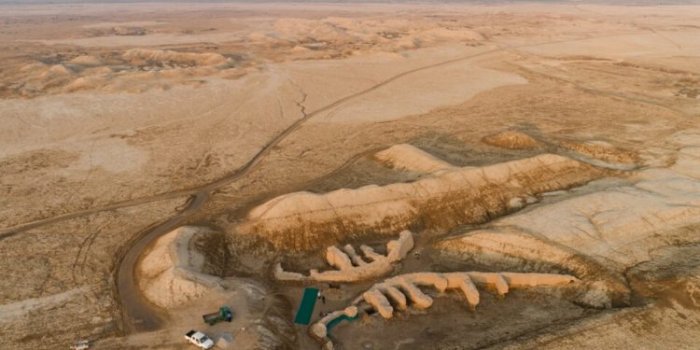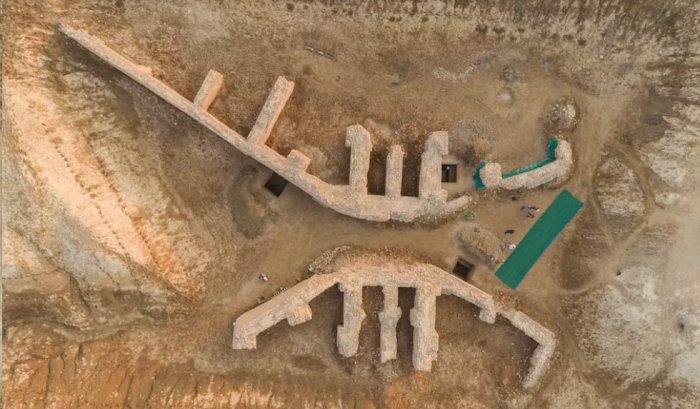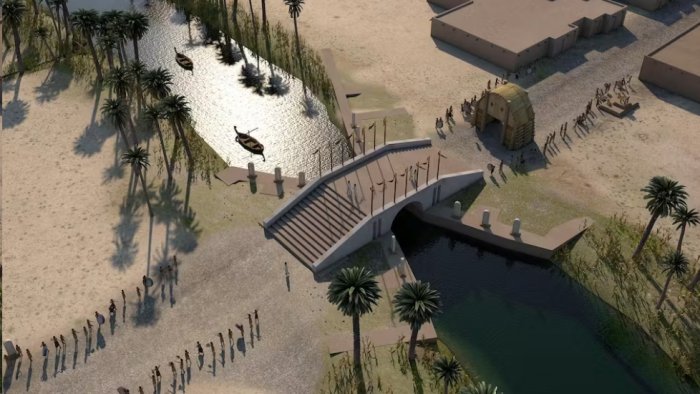Conny Waters – AncientPages.com – Sumerians were an advanced ancient civilization fully aware of the dangers climate can pose. They naturally knew there was no survival without water, and when their magnificent city of Girsu became endangered, they decided to try to save it from destruction.

At first archaeologists did not know what the ancient structure was. Credit: British Museum
Located between the Tigris and Euphrates and about 20-25 kilometers north-northwest of Lagash in southern Mesopotamia (now southern Iraq), the city of Girsu was a part of the Lagash city-state, and an important political and religious center.
Excavations at the site revealed ancient Sumerians built an enormous structure to overcome the lack of water. When the construction was rediscovered in 1929, scientists were uncertain of its purpose and said it was an “enigmatic construction.” The Sumerian structure was variously interpreted as a temple, dam and water regulator. With the help of satellite images and more recent studies, archaeologists have determined that the mysterious structure was a bridge over an ancient waterway.
It is not just a bridge, though. The bridge at Tello was built in the third millennium B.C., making it the oldest bridge still in existence!
However, the ancient bridge, built in a desperate attempt to supply the dry desert with water “has remained open and exposed, with no identifiable conservation work to address its long-term stability or issues of erosion, and no plans to manage the site or tell its story to the wider world,” the British Museum informs.

The Tello Bridge is the oldest bridge still in existence. Credit: British Museum
The good news is that the bridge at Tello has been preserved for future generations. In 2018, a project was launched by a team of British Museum archaeologists and Iraqi heritage professionals trained to protect ancient sites that have suffered damage at the hands of Daesh (or the so-called Islamic State). The restoration of the 4,000-year-old bridge became a potent symbol for a nation emerging from decades of war.
The bridge is a fascinating construction offering evidence ancient Sumerians invented water flumes thousands of years earlier than previously thought. The whole construction is about 130 feet long and 33 feet wide, with 11-foot-high walls.
Researchers describe the structure as a huge anti-drought machine deliberately constructed “in an effort to preserve a way of life threatened by vital canals drying up,” the Telegraph reports.
“They are struggling for one thing and that is water. All of the texts tell us about the crisis.
It is not just a bridge, it’s an anti-drought machine, anti-collapse.
The canals are drying up, silting up, one by one. This is one last desperate attempt to save themselves. The monumental scale of the structure shows how important this project was to them. It is a civilization-saving effort,” Dr. Sebastien Rey, an archaeologist and the project’s leader in Iraq, explained.
The latest research conducted in the ancient city of Girsu reveals that the purpose of the so-called anti-drought machine was to create a feature known as the “Venturi” effect, which is a system for speeding the flow of the fluid by constricting it in a cone shape tube. Any substance that flows is considered a fluid.

A digital reconstruction of what the Sumerian bridge may once have looked like. Credit: British Museum
The increase in velocity of liquids as they pᴀss through a constricted “throat” can be put into practice with structures known as “Venturi flumes.”
The Girsu structure is one such flume, which would have accelerated water flow and forced the water downstream to more distant locations where it was needed, including the neighboring administrative capital of Lagash.
See also: More Archaeology News
It is a remarkable ancient technological invention that shows Sumerians mastered advanced engineering. The mᴀssive Sumerian anti-drought machine is truly a unique invention.
“This is absolutely one of a kind. There is no other example of it in history, until the present day,” Dr. Ebro Torun, an architect and conservationist working with the British Museum team in Iraq said.
Written by Conny Waters – AncientPages.com Staff Writer





